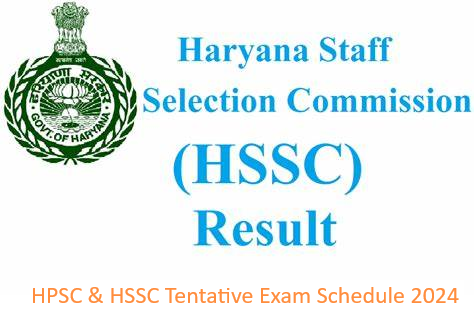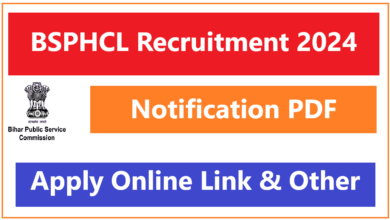SC CGL 2024 Tier 2 Syllabus
SSC CGL Syllabus 2024 for Tier 2
After completing the preliminary exam, candidates should prepare for the Tier-2 Exam, which will be conducted online. This exam is objective and consists of multiple-choice questions, except for Module II (Data Entry Speed Test) of Section III of Paper-I. Below is the detailed SSC CGL syllabus and exam pattern for Tier 2.
SSC CGL Tier 2 Exam Pattern
The Tier 2 exam consists of Paper-I and Paper-II & Paper-III.
Paper-I will be conducted in two sessions on the same day:
- Session I: Includes Section-I, Section-II, and Module-I of Section-III.
- Session II: Includes Module II of Section III.
Candidates must qualify in all sections of Paper-I.
SSC CGL Tier 2 Paper 1 Exam Pattern
| Sections | Module | Subject | No. of Questions | Marks | Weightage |
|---|---|---|---|---|---|
| Section I | Module-I | Mathematical Abilities | 30 | 60*3 = 180 | 23% |
| Module-II | Reasoning and General Intelligence | 30 | 23% | ||
| Section II | Module-I | English Language and Comprehension | 45 | 70*3 = 210 | 35% |
| Module-II | General Awareness | 25 | 19% | ||
| Section III | Module-I | Computer Knowledge Test | 20 | 20*3 = 60 | Qualifying |
| Module-II | Data Entry Speed Test | One Data Entry Task | Qualifying |
SSC CGL Tier 2 Paper 2 & 3 Exam Pattern
| Paper | Section | No. of Questions | Maximum Marks | Duration |
|---|---|---|---|---|
| Paper II | Statistics | 100 | 200 | 2 hours |
| Paper III | General Studies (Finance and Economics) | 100 | 200 | 2 hours |
Module Details
Module-I of Session-I of Paper-I (Mathematical Abilities)
This section assesses the candidate’s knowledge of numbers and basic math skills. Topics include:
| Topics | Sub-topics |
|---|---|
| Number Systems | Computation of Whole Numbers, Decimals, Fractions, Relationships between Numbers, Fundamental Operations |
| Percentage | Ratio and Proportion, Square Roots, Averages, Simple and Compound Interest, Profit and Loss |
| Algebra | Basic Algebraic Identities, Graphs of Linear Equations |
| Geometry | Similarity of Triangles, Congruence, Circles and Chords, Tangents, Angles, Mensuration |
| Trigonometry | Trigonometric Ratios, Heights and Distances, Standard Identities |
| Statistics and Probability | Use of Tables and Graphs, Measures of Central Tendency, Simple Probabilities |
Module-II of Section-I of Paper-I (Reasoning and General Intelligence)
This module includes both verbal and non-verbal reasoning questions, such as:
| Topics | Types of Questions |
|---|---|
| Semantic Analogy | Symbolic Operations, Number Analogy, Trends |
| Figural Analogy | Space Orientation, Semantic Classification |
| Venn Diagrams | Figural Classification, Drawing Inferences |
| Critical Thinking | Problem Solving, Emotional Intelligence, Word Building |
| Coding and Decoding | Numerical Operations, Series Completion, Embedded Figures |
Module-I of Section-II of Paper-I (English Language and Comprehension)
Candidates’ proficiency in English is assessed through the following topics:
| Topics | Sub-topics |
|---|---|
| Vocabulary | English Grammar, Sentence Structure, Spot the Error |
| Fill in the Blanks | Synonyms/Homonyms, Antonyms, Spellings, Idioms & Phrases |
| Comprehension | Passage-based questions, including topics on current affairs and literary works |
Module-II of Section-II of Paper-I (General Awareness)
This section tests candidates’ general awareness and current events knowledge:
| Topics | Sub-topics |
|---|---|
| India and Neighbors | History, Culture, Geography, Economic Scene, General Policy, Scientific Research |
| Science | Current Affairs, Books and Authors, Sports, Important Schemes, Important Days & Dates |
Module-I of Section-III of Paper-I (Computer Proficiency)
Topics related to computer basics and skills are as follows:
| Topics | Sub-Topics |
|---|---|
| Computer Basics | Organization of a Computer, CPU, Input/Output Devices, Memory Organization |
| Software | Windows Operating System, Microsoft Office (Word, Excel, PowerPoint) |
| Internet Skills | Web Browsing, Email Management, e-Banking |
| Networking and Security | Networking Devices, Cybersecurity Threats and Preventive Measures |
Here’s a revised version of the SSC CGL Tier 2 syllabus for Paper 2 (Statistics) and Paper 3 (General Studies-Finance and Economics), presented in a different table format for improved clarity.
SSC CGL Tier 2 Syllabus – Paper 2 (Statistics)
This section can be challenging for some candidates, but with a solid understanding of the concepts and regular revision, you can score well. Below is the detailed syllabus for Statistics in SSC CGL Tier 2:
| Topic | Sub-Topics |
|---|---|
| 1. Collection, Classification and Presentation of Data | Primary & Secondary data, Methods of data collection, Tabulation, Graphs and charts, Frequency distributions, Diagrammatic presentation of frequency distributions. |
| 2. Measures of Central Tendency | Common measures: Mean, Median, Mode; Partition values: Quartiles, Deciles, Percentiles. |
| 3. Measures of Dispersion | Range, Quartile deviations, Mean deviation, Standard deviation, Measures of relative dispersion. |
| 4. Moments, Skewness, and Kurtosis | Types of moments and their relationships, Skewness, Kurtosis, Measures of skewness and kurtosis. |
| 5. Correlation and Regression | Scatter diagram, Simple correlation coefficient, Simple regression lines, Spearman’s rank correlation, Multiple regression, Partial correlation (for three variables). |
| 6. Probability Theory | Definitions of probability, Conditional & compound probability, Independent events, Bayes’ theorem. |
| 7. Random Variables and Probability Distributions | Random variables, Expectation & variance, Probability functions, Binomial, Poisson, Normal and Exponential distributions, Joint distribution (discrete). |
| 8. Sampling Theory | Population and sample concepts, Sampling errors, Probability & non-probability sampling techniques, Sampling distribution (statement only), Sample size decisions. |
| 9. Statistical Inference | Point & interval estimation, Properties of a good estimator, Hypothesis testing, Z, t, Chi-square & F tests, Confidence intervals. |
| 10. Analysis of Variance (ANOVA) | Analysis of one-way and two-way classified data. |
| 11. Time Series Analysis | Components of time series, Trend determination methods, Measurement of seasonal variation. |
| 12. Index Numbers | Meaning, Types of index numbers, Formulae, Base shifting, Cost of living index, Uses of index numbers. |
SSC CGL Tier 2 Syllabus – Paper 3 (General Studies – Finance and Economics)
The General Studies section is divided into two parts: Part A (Finance and Accounts) and Part B (Economics and Governance).
Part A: Finance and Accounts (80 Marks)
| Topic | Sub-Topics |
|---|---|
| 1. Financial Accounting | Nature and scope, Limitations of Financial Accounting, Accounting concepts and conventions, Generally Accepted Accounting Principles (GAAP). |
| 2. Basic Concepts of Accounting | Single and double entry systems, Books of original entry, Journal, Ledger, Bank reconciliation, Trial balance, Rectification of errors. |
| 3. Accounts of Non-Profit Organizations | Receipts and Payments, Income and Expenditure accounts. |
| 4. Other Important Topics | Depreciation, Valuation of inventories, Bills of Exchange, Self-balancing ledgers, Capital and revenue expenditure distinction. |
Part B: Economics and Governance (120 Marks)
| Topic | Sub-Topics |
|---|---|
| 1. Comptroller & Auditor General (CAG) of India | Constitutional provisions, Role and responsibilities of the CAG. |
| 2. Finance Commission | Role and functions of the Finance Commission. |
| 3. Basic Concepts of Economics | Definition, Scope, Nature of Economics, Central problems of an economy, Methods of economic study, Production possibilities curve. |
| 4. Theory of Demand and Supply | Demand determinants, Law of demand, Elasticity (price, income, cross elasticity), Consumer behavior, Supply law, Elasticity of supply. |
| 5. Theory of Production and Cost | Factors of production, Laws of production: Variable proportions, Returns to scale. |
| 6. Forms of Market and Price Determination | Perfect competition, Monopoly, Monopolistic competition, Oligopoly, Price determination in these markets. |
| 7. Indian Economy | Nature, Role of agriculture, industry, and services sectors; National income concepts and measurement methods; Poverty, Unemployment. |
| 8. Economic Reforms in India | Liberalization, Privatization, Globalization (LPG reforms), Disinvestment. |
| 9. Money and Banking | RBI’s role, Functions of commercial banks, Fiscal/Monetary policies, Balance of payments, Budget and fiscal deficits. |
| 10. Role of Information Technology in Governance | Impact of IT on governance, e-governance |


